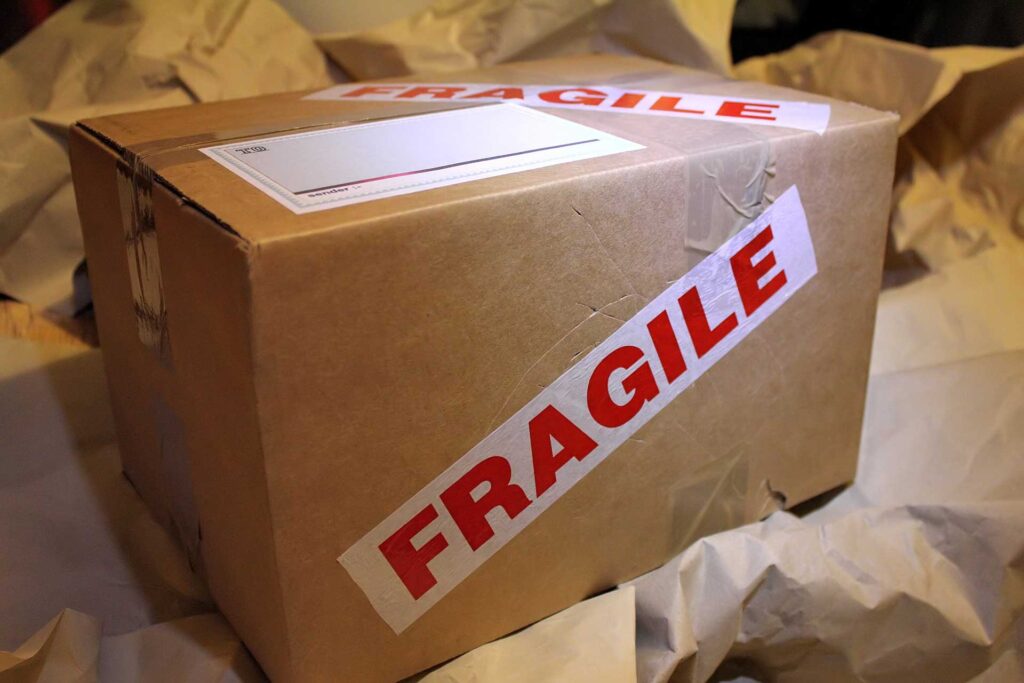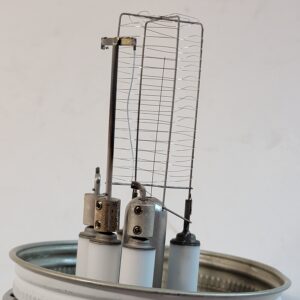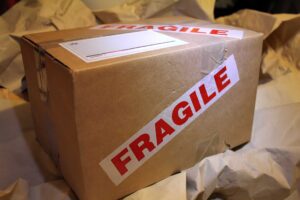Companies often need to ship fragile equipment at a moment’s notice. Responding to the demand for immediacy, major shipping companies have mastered the art of overnight and even same-day shipping, However, most shipping companies still haven’t figured out how to handle extremely fragile packages. If you’re planning to ship fragile equipment, you need to take extra precautions to ensure the item arrives in one piece.
Best Practices for Shipping Fragile Equipment
At Lab Liquidators, we frequently ship fragile equipment across the country. This detailed guide breaks down what we consider the most important practices for packing and shipping fragile equipment.
1. Choose the right container
Selecting the right container for shipping depends on the size of your equipment.
Small items (less than a few linear feet) can be shipped in cardboard boxes. However, make sure you use double-walled boxes, as these are more than two times stronger than their single-walled counterparts. The boxes that are most commonly destroyed during shipping are flimsy, single-walled boxes.
If you are shipping a larger piece of equipment, you should ship it in a custom crate with a freight carrier. Custom craters can be found in most large cities, and prices vary by complexity.
Crates that do not require custom foam inserts or extra support padding for an oblong object will be less expensive than those that do. Valley Box Company suggests that the average customer will spend between 3-7% of the total item worth in custom boxing, and up to 10% of the item if the crates are created in low quantity or if the item has complex sides.
For high-volume custom shipping solutions, it is a great idea to consistently work with one freight shipper and find a company who can become your shipping partner. That company can help you find a solution to complex logistical shipping problems on a consistent basis.
Forming an ongoing relationship with a trustworthy logistics company can be one of the most beneficial long-term decisions your company can make, especially if you have a high asset turnover.
2. Leave no room for movement
If you’re packaging the equipment yourself, make sure the item has no freedom to move inside its box. Filling the box with foam packing peanuts is one of the best ways to prevent an item from shifting during the shipping process.
This video by Chamberlain Antiques demonstrates the importance of tightly packaging items. It’s worth a watch, if not only for the hilarious part in the middle where he tests the strength of his box.
Another valuable method for protecting your equipment is double-boxing. In this example by the Box Depot LA, the packer uses two boxes and perfectly fits slices of foam in between them.
Double-boxing is useful because the inner box can absorb extra impact and provide an extra layer of protection if the outer box is broken or pierced.
Additionally, if your equipment has a glass pane or glass components, you might consider removing these and packaging them separately.
3. Properly label your package
A fragile package needs several different labels to communicate how to properly handle it.
First, you should place a sticker that says “fragile” on every side of the box. Fragile stickers are inexpensive, so even if they only influence one handler along the line to treat the package a little better, the stickers are worthwhile. These stickers can be bought directly from shipping carriers or online.
If your item should not be dropped from very high, then the box should say that, too. Keep in mind that any item shipped with a regular carrier should be able to withstand a drop from at least waist height, regardless of whether you label it. If your equipment can’t survive any falls, you should find a different way to deliver it.
Does your equipment have a required orientation, like a vacuum pump does? Are you shipping any hazardous or toxic substances? The box should be labeled with this information as well.
In every package, you should place a packing slip on the outside of the box or crate and another one on the inside. If the slip on the outside is somehow destroyed or removed, the carrier will be able to look inside to figure out whose it is and where it belongs.
4. Buy shipping insurance with a third-party
Insurance is important for all fragile shipments, but it is essential for very expensive equipment. Third-party shipping insurance provides financial protection in the event your package is damaged or lost in transit.
You may be tempted to skip shipping insurance because major carriers such as UPS, FedEx, and USPS allow you to declare an item’s value. Declaring an item’s value is usually free under $100. On the surface, this declaration seems equivalent to insurance because the amount you declare is the amount you receive if they damage or lose your item.
However, you should know that most carriers will only reimburse you if they packed the item for you. If their staff does not pack it themselves, they can claim you underpackaged it and deny responsibility.
We experienced this situation with a small package (40 linear inches) we were shipping across the country. We decided to ship with a major U.S. carrier because it was small. We declared the value with the carrier and paid them to package the item in front of us in their own boxes.
When we informed the carrier’s staff that our item was fragile, they added extra padding. We didn’t think this was sufficient, but the “shipping professionals” assured us the package would be fine.
Sadly, the equipment arrived irreversibly damaged. But to our surprise, the carrier initially refused to refund us for the declared value of the item because it was “not adequately packed.” Once we reminded them that they were the ones responsible for packing the item, they quickly reimbursed us for the full value of the item.
We learned our lesson from this incident, and we suggest you do, too. The safest option is to purchase third-party insurance and package separately from the carrier. As we saw above, carrier staff are not usually trained to package fragile, specialized equipment, so if you care about your items arriving undamaged, you’ll need to learn how to pack it properly yourself.
When purchasing insurance with third parties, you need to pay attention to whether you are buying insurance or declaring the value of an item. Declaring value with a third-party is better than declaring it with the carrier if you package yourself, but you still need to prove the carrier’s negligence in order to be reimbursed, which can be difficult.
Insurance, on the other hand, is traditionally more expensive but broader in scope. A good insurance policy can cover your items all the way from Point A to Point B and reimburse you even if the damage is your fault. So, with some types of insurance, if your employee drops the box in your warehouse or drives a forklift over it, you can still receive reimbursement.
Need some help?
Packing and shipping equipment for sale can be a time-consuming process, especially if you’re looking for a quick solution for a few items.
Lab Liquidators helps scientific and manufacturing companies by offering a streamlined purchase and pick-up process for new, used, and broken equipment. We’ll come to you and remove your equipment, so you don’t need to learn the complex logistics of shipping fragile equipment. Contact us today for a quote and let us know how we can serve you.







